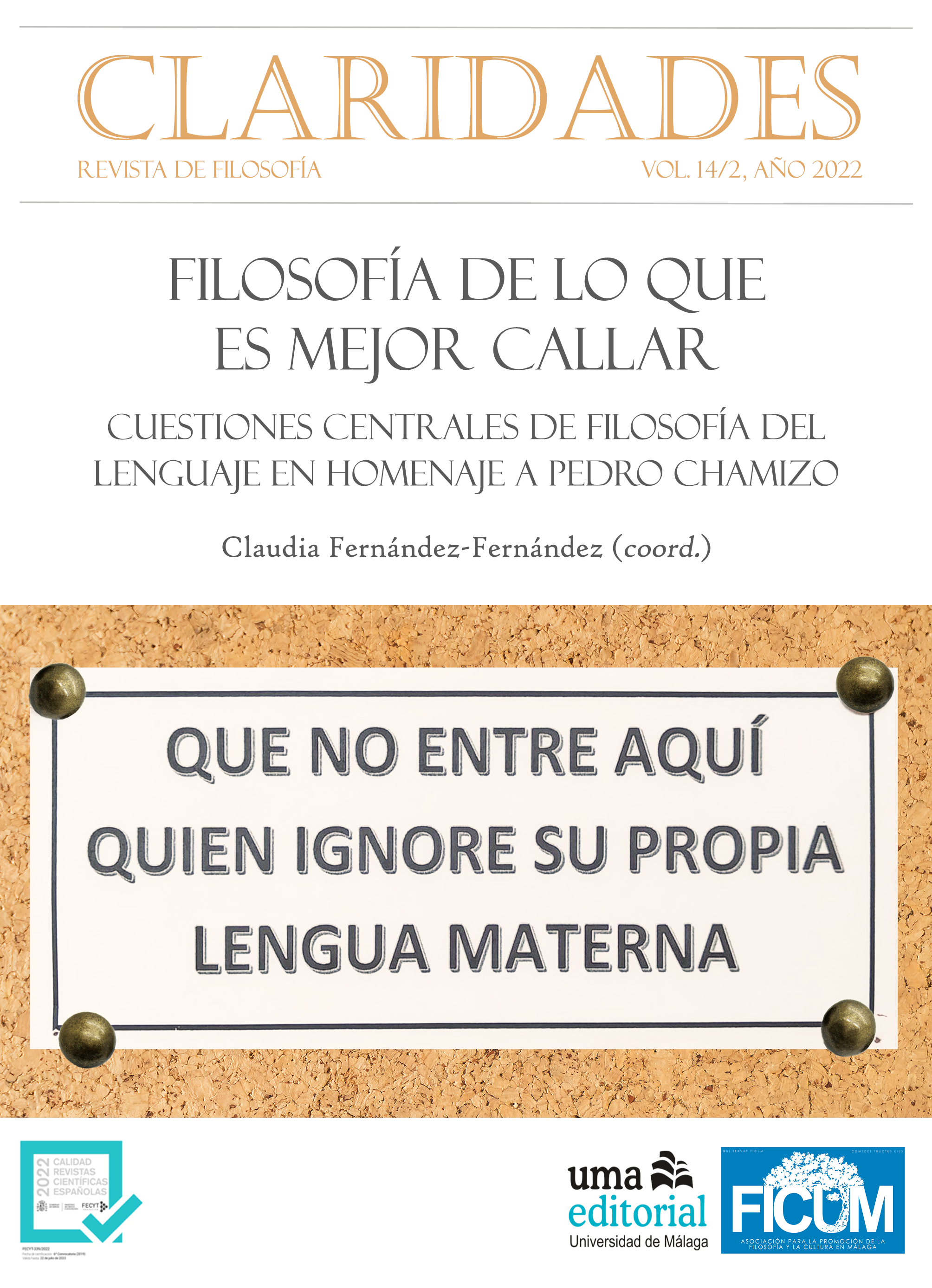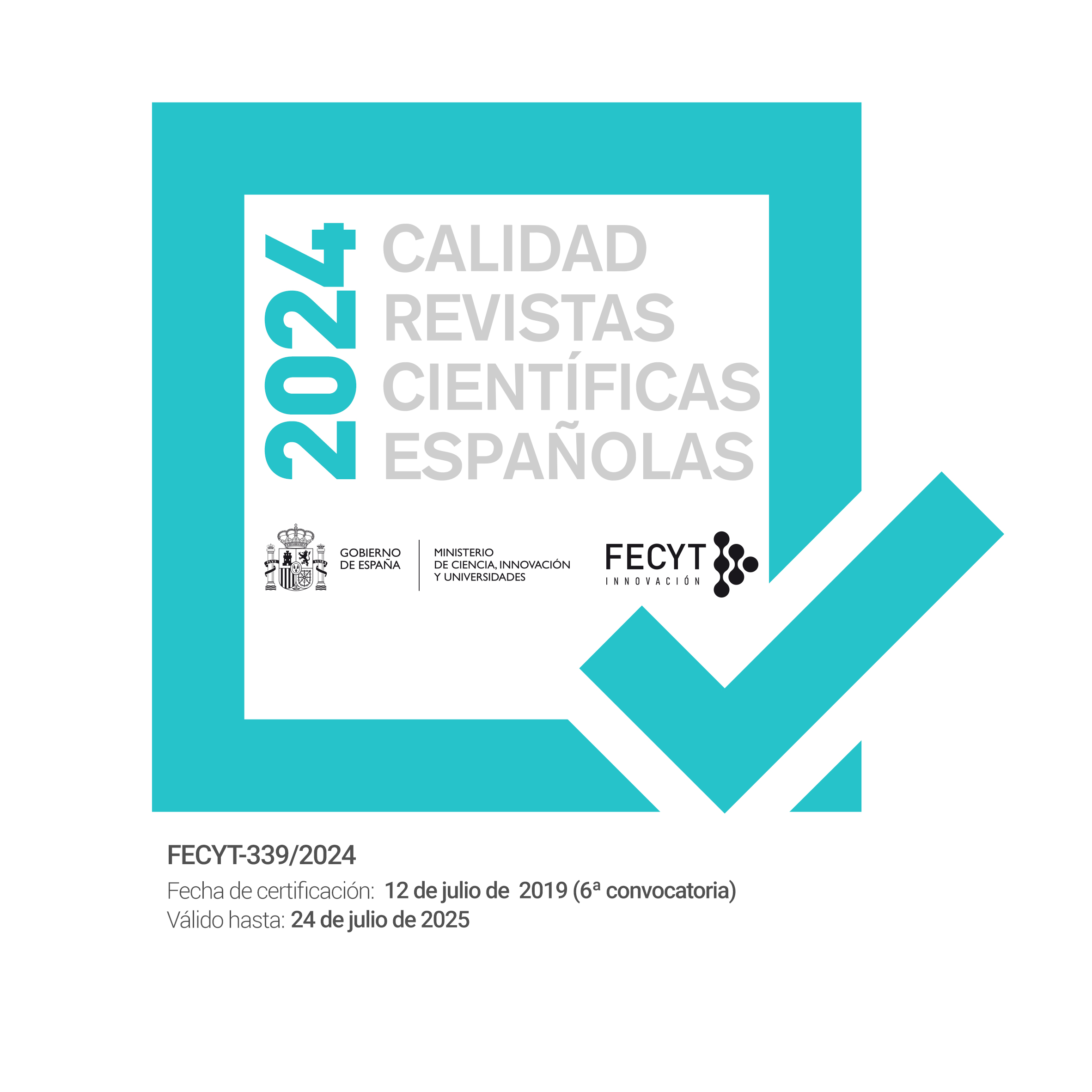Listening to the Universe
DOI:
https://doi.org/10.24310/Claridadescrf.v14i2.13668Keywords:
Listening, Obedience, Alterity, Grammar, Metaphor, Metonymy, CommunicationAbstract
The present article focuses on listening conceptualized as an active process of perception, with no fixed boundaries, directly connected to thought, and highlighting the ethical underpinnings of communication. Overall, listening is discussed as the primary and authentic characteristic of being with a double movement – towards the Other and towards oneself. A close link between obedience and listening is emphasized, which is demonstrated by emplying the Russian equivalent of the verb ‘to obey’ and the peculiarities of its cases. The dynamic nature of listening is also discussed in terms of metaphor (transfer based on similarity) and metonymy (transfer based on contiguity). It is argued that listening reveals the liminal and sacred nature of communication.
Downloads
Metrics
Publication Facts
Reviewer profiles N/A
Author statements
Indexed in
-
—
- Academic society
- N/A
- Publisher
- Asociación para la promoción de la filosofía y la cultura en Málaga (FICUM) y UMAEditorial
References
Benjamins, W. and A. Lacis. (1978). ‘Naples’, reflections: Essays, aphorisms, autobiographical writings. New York: Schocken.
Buslaev, F.I. (1875). Istoricheskaya grammatika russkogo yazyka [A historical grammar of Russian language]. No place: Izdatel’stvo br. Salaevykh.
Carpenter, E., & McLuhan, M. (Eds.) (1960). Explorations in communication: An anthology. Boston, MA: Beacon Press.
Dolar, M. (2006). A voice and nothing more. Cambridge, Mass.: MIT Press.
Fletcher, P. and C. O'Toole (2016). Language development and language impairment: A problem-based introduction. Malden, MA: Wiley-Blackwell.
Hartwig, M. (2015). “Style.” In M. K. Hartwig (ed.), A Companion to Ancient Egyptian Art. Malden, MA: Wiley-Blackwell, pp. 39-59.
Heidegger, M. (1966). Being and time: A translation of Sein und Zeit. New York: SUNY Press.
Heidegger, M. (2018). Heraclitus – the inception of occidental thinking and logic. Heraclitus’ doctrine of the Logos. New York: Bloomsbury.
Figal, G. (ed.). (2009). The Heidegger reader. Bloomington, IN: Indiana University Press.
Jakobson, R. (1935). “Marginal notes on the prose of the poet Pasternak.” In D. Davie and A. Livingston, (eds.), Pasternak: Modern judgments. Glasgow: Macmillan, pp. 135-151.
Lipari, L. (2010). “Listening, thinking, being.” Communication Theory, 20, pp. 348-62.
Lipari, L. (2020). “Phenomenological Approaches.” In D. Worthington and G. Bodie (eds.), The Handbook of Listening. Hoboken, NJ: John Wiley & Sons, Inc., pp. 27-40.
McLuhan, M. (2004). “Visual and Acoustic space.” In C. Cox and D. Warner (eds.), Audio Culture: Readings in Modern Music. New York and London: Continuum, pp. 67-72.
Paducheva, E. (2010). Semantichekie issledovaniya [Semantics investigations]. Moscow: Yazyki slavyanskoi kul’tury,
Peshkovskii, A.M. (1962). Russkii sintaksis v nauchnom osvechenii [Russian syntax in the scientific light]. Moscow: Yazyki slavyanskoi kul’tury.
Ratcliffe, K. (1999). “Rhetorical listening: A trope for interpretive invention and a ‘code of cross-cultural conduct’. College Composition and Communication, 51, 2.
Rorty, R. (1979). Philosophy and the mirror of nature. Princeton, NJ: Princeton University Press.
Rothenbuhler, E. (1998). Ritual communication: From everyday conversation to mediated ceremony. Thousand Oaks, CA: SAGE.
Rozental’, D. (1997). Russkii yazyk [Russian language]. Moscow: Airis.
Worthington, D. and G. Bodie (eds.). (2020). The handbook of listening. Hoboken, NJ.: John Wiley & Sons, Inc.
Yanko-Trinitskaya, N. (1962). Vozvratnye glagoloy v sovremennom russkom yazyke [Reflexive verbs in the modern Russian language]. Moscow: Academy of Sciences.
Zaliznyak, ?. (2013). Grammatichekii slovar’ russkogo yazyka [A grammar dictionary of the Russian language]. Moscow: MTSNMO.
Downloads
Published
How to Cite
Issue
Section
License
Esta revista provee acceso libre inmediato a su contenido bajo el principio de hacer disponible gratuitamente la investigación al público. Todos los contenidos publicados en Claridades. Revista de Filosofía, están sujetos a la licencia Creative Commons Reconocimento-NoComercia-Compartirigual 4.0 cuyo texto completo puede consultar en <http://creativecommons.org/licenses/by-nc-sa/4.0>
Es responsabilidad de los autores/as obtener los permisos necesarios de las imágenes que están sujetas a derechos de autor.
Los autores/as cuyas contribuciones sean aceptadas para su publicación en esta revista conservarán el derecho no exclusivo de utilizar sus
contribuciones con fines académicos, de investigación y educativos, incluyendo el auto-archivo o depósito en repositorios de acceso abierto de cualquier tipo.
La edición electrónica de esta revista esta editada por la Editorial de la Universidad de Málaga (UmaEditorial), siendo necesario citar la procedencia en cualquier reproducción parcial o total.

















6.png)
